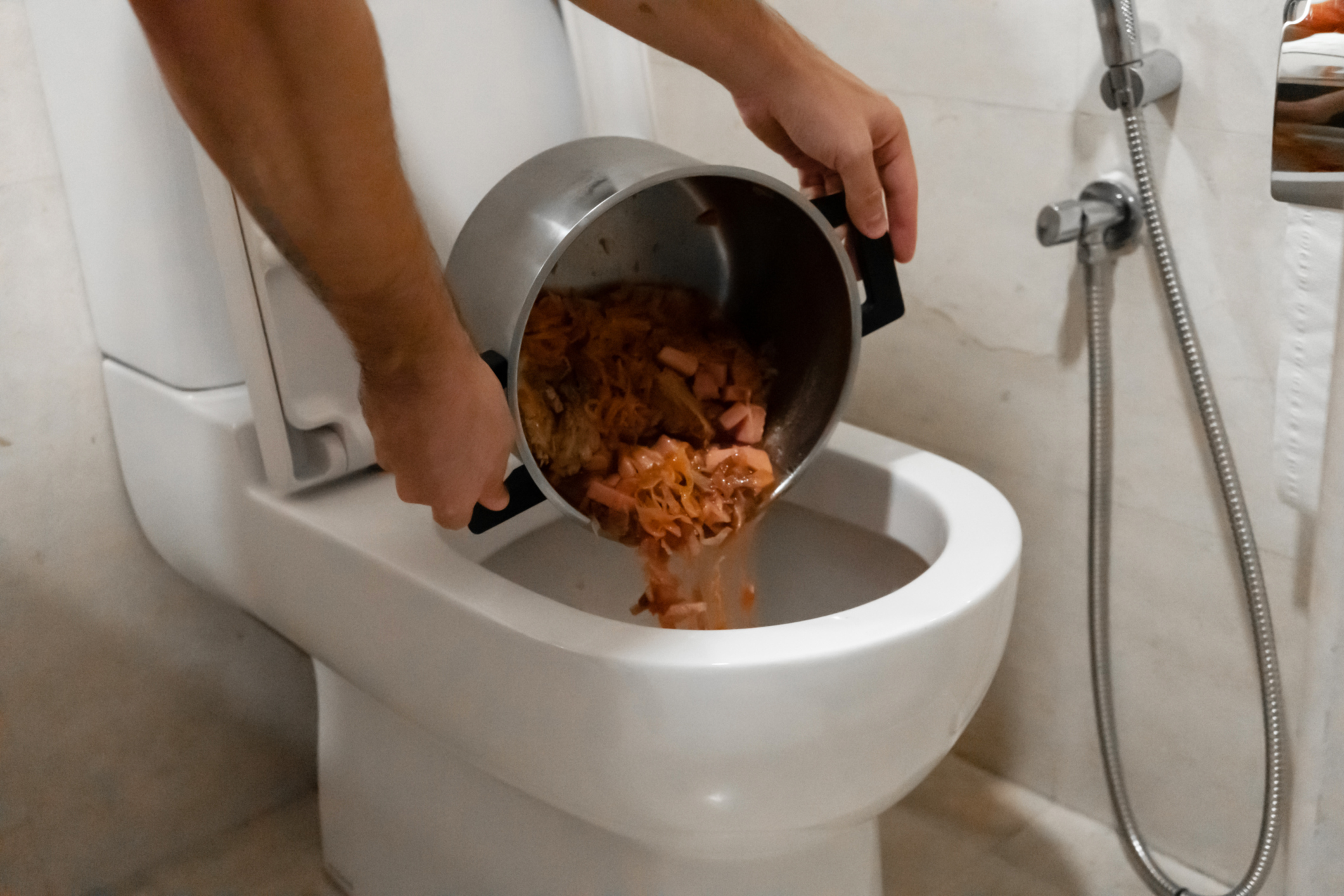Listed here below yow will discover some excellent news concerning What Can Happen If You Flush Food Down the Toilet?.

Intro
Many individuals are frequently faced with the predicament of what to do with food waste, especially when it comes to leftovers or scraps. One usual concern that occurs is whether it's alright to purge food down the toilet. In this article, we'll explore the reasons people may consider purging food, the consequences of doing so, and different techniques for correct disposal.
Reasons individuals may consider purging food
Absence of recognition
Some individuals might not know the potential damage triggered by purging food down the commode. They might mistakenly think that it's a safe technique.
Ease
Flushing food down the commode might look like a fast and very easy remedy to disposing of undesirable scraps, specifically when there's no neighboring trash can available.
Idleness
In some cases, individuals might merely choose to flush food out of large laziness, without thinking about the consequences of their activities.
Repercussions of flushing food down the bathroom
Environmental effect
Food waste that winds up in rivers can contribute to contamination and injury aquatic communities. In addition, the water made use of to purge food can strain water resources.
Pipes problems
Flushing food can bring about clogged pipelines and drains, causing expensive plumbing fixings and hassles.
Kinds of food that must not be flushed
Fibrous foods
Foods with coarse appearances such as celery or corn husks can obtain tangled in pipelines and create blockages.
Starchy foods
Starchy foods like pasta and rice can absorb water and swell, resulting in blockages in pipes.
Oils and fats
Greasy foods like bacon or cooking oils need to never be purged down the toilet as they can strengthen and create blockages.
Proper disposal approaches for food waste
Utilizing a garbage disposal
For homes geared up with waste disposal unit, food scraps can be ground up and purged through the plumbing system. Nonetheless, not all foods appropriate for disposal in this fashion.
Recycling
Certain food packaging materials can be recycled, minimizing waste and minimizing ecological effect.
Composting
Composting is a green means to throw away food waste. Organic products can be composted and made use of to enhance soil for horticulture.
The value of appropriate waste administration
Minimizing ecological harm
Correct waste administration methods, such as composting and recycling, aid decrease contamination and preserve natural deposits for future generations.
Securing pipes systems
By preventing the technique of flushing food down the commode, home owners can stop pricey pipes repairs and preserve the stability of their pipes systems.
Final thought
Finally, while it might be alluring to purge food down the commode for convenience, it is very important to understand the potential effects of this activity. By embracing appropriate waste management techniques and getting rid of food waste properly, people can contribute to much healthier plumbing systems and a cleaner setting for all.
FLUSH FOOD DOWN THE TOILET?
FLUSHING FOOD CAN CAUSE BLOCKED DRAINS IN YOUR HOME
All of the plumbing fixtures in your home are connected to the same sewer pipe outside of your home. This outdoor sewer pipe is responsible for transporting all the wastewater from your home to the Council sewer mains. Even small pieces of food that go down the kitchen sink can cause problems for your sewer. It should therefore be obvious that flushing larger bits of food, such as meat, risks a clog in either the toilet itself or the sewer pipes. Flushing greasy food is even more problematic because oil coagulates when it cools, coating the interior lining of your pipes.
THE TOILET IS NOT A BIN
Food isn’t the only thing that people shouldn’t be flushing down the toilet. People use the toilet to dispose of all kinds of things such as tampons, makeup wipes, dental floss, kitty litter and even underwear. Water goes to great lengths to educate residents about the high costs and stress placed on wastewater treatment systems simply from people flushing the wrong stuff down the toilet. It costs taxpayers millions of dollars each year, and homeowners thousands in blocked drain repairs.
FLUSHING FOOD IS A WASTE OF WATER
Flushing food is a waste of our most precious resource - water. In June this year Level 1 water restrictions were introduced to protect water supply from drought conditions. Much of New South Wales continues to be affected by prolonged drought with recent figures revealing up to 97 per cent of the state remains in drought. Depending on whether you have a single or dual flush toilet, every single flush uses between five and 11 litres of water. In the current climate this is a huge amount of water to be wasting on flushing food that should be placed in the bin (or better yet, the compost).
https://www.jabplumbingsolutions.com.au/blog/can-you-flush-food-down-the-toilet

I was introduced to that report on Think Twice Before Flushing Food Down Your Toilet from someone on another domain. In case you liked our blog entry if you please remember to pass it around. I love your readership.
Call Today